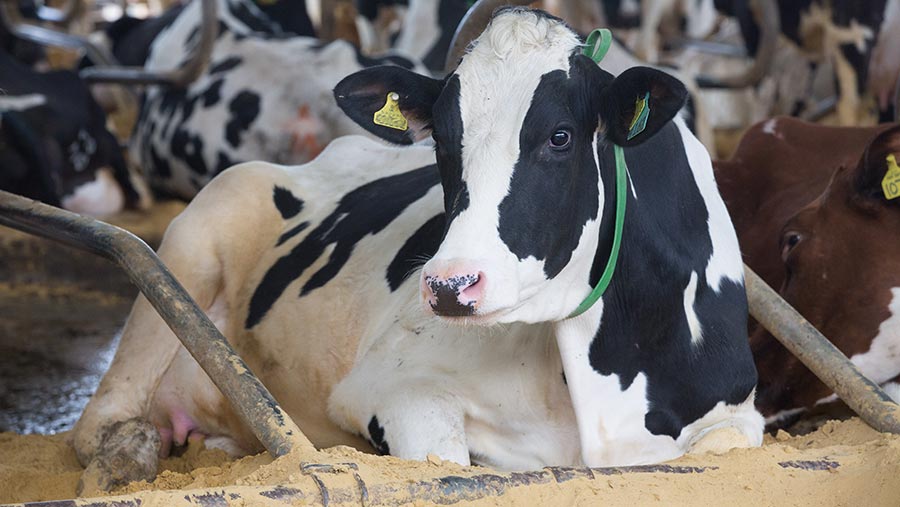Milk prices forecast to return to above 40p/litre by summer
 © Tim Scrivener
© Tim Scrivener Dairy consultants have indicated that milk prices are likely to hover at about 37-38p/litre for the next few months, before potentially rising to 40-41p/litre by June and July if the market remains supported.
Farmgate milk prices started 2024 on a more positive note with some improved demand at wholesale and retail after a particularly turbulent 2023.
At the Semex conference in Glasgow on 15 January, dairy market analyst Chris Walkland said that milk prices went “up the ladder” in 2022 and “down the snake” in 2023, with ex-farm values dropping by 30% last year.
See also: Further uplift for milk prices as supply constraints persist
More recently, demand has been improving, with reports from processors of retail sales picking up towards the end of last year and the industry forecasting a return to volume growth in 2024.
Mr Walkland said: “Butter is pretty stable, that’s a positive; cream has recovered from its Christmas blues, mozzarella is not great, but cheddar is showing signs of improvement.
“It’s not all good news though, we are not eating as much pizza as we used to, so demand is still pretty iffy. Nobody out there is saying demand has fully recovered.”
Wholesale dairy values increased for the fourth consecutive time at the latest fortnightly Global Dairy Trade auction on 16 January, with the price index rising by 2.3% on the previous event.
The average price at the auction was US$3,493/t (£2,760/t), having increased by more than $600/t (£474/t) since last September.
Supply
GB daily milk supplies in the UK had been running behind last year’s levels, but it has since increased and is currently slightly ahead of the previous year.
Mr Walkland said: “Volumes in October in Europe were well down, but now, according to some reports, they are climbing quite alarmingly, especially in France and Germany, which are big producing nations, and that is a worry.”
Meanwhile, milk supplies in New Zealand and the US are still down.
There is a bit of positivity on demand and some negativity on volumes at the moment, according to Mr Walkland.
He said: “Farmers are not in control of supply, there has been no control over supply since quotas went in 2015.
“We know what happens when prices get low and prices go below demand. Typically, that stipulates farmers should produce more milk to maintain their incomes.”
